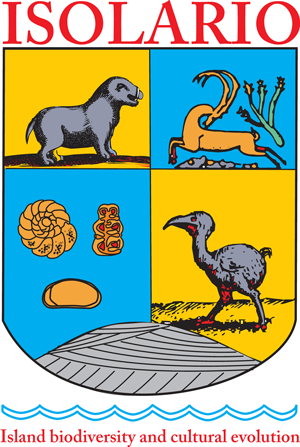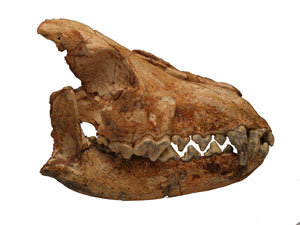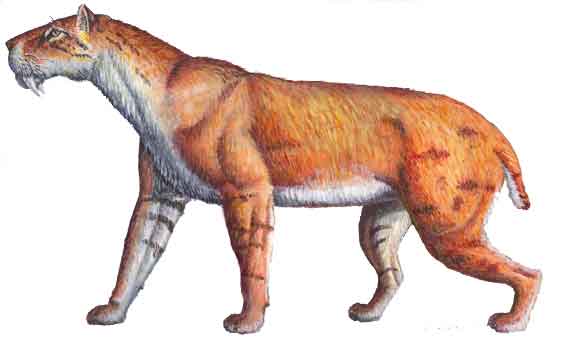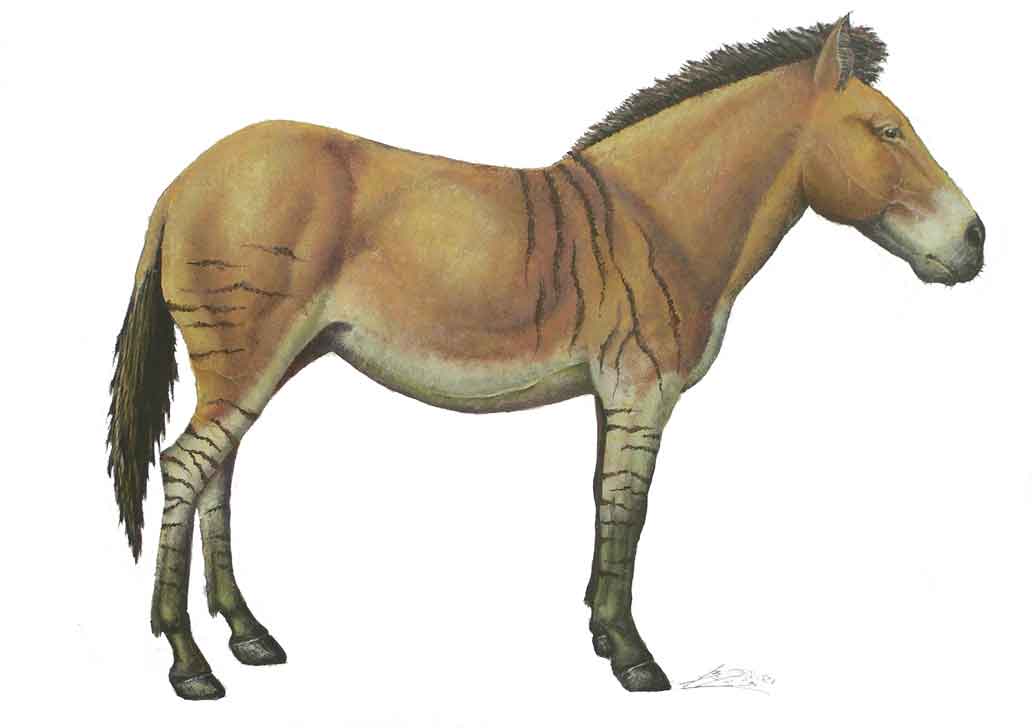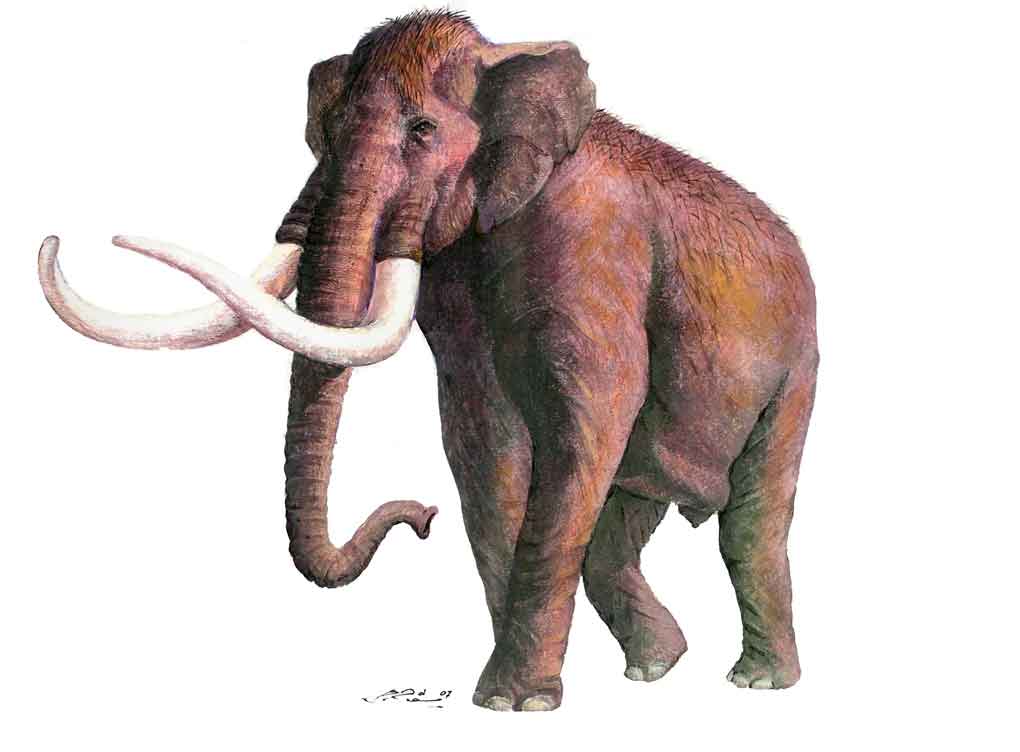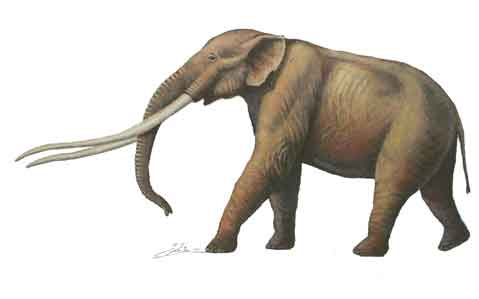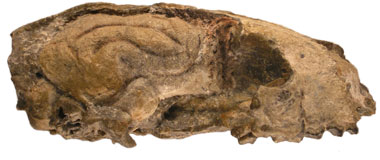
[Zodiolestes AMNH-New York ]
Soft tissues usually do not fossilize, yet there is fossil evidence about the brain.
This is because the brain is protected within the neurocranium, a hard bone structure that
is often preserved as fossil, and which in addition gets a lot of attention during paleontological
excavations and subsequent conservation. Particularly in the case of mammals, the brain almost
entirely fills the neurocranium, so the casts of the brain cavity (endocranial casts or endocasts)
reveal most of the features of the external brain anatomy. Although
paleoneurological data are limited to the external anatomy of the brain, they are the
only direct evidence about the brains of the past. The use of only living species to
reveal the evolutionary history of the brain has its limitations, due to the danger
of so-called Scalae Naturae (pseudo-evolutionary sequences) in which a living species
is regarded as representative of the ancestral stage of another species. To
avoid the effects of parallelisms, the contribution of the fossil record is crucial.
Where comparative neurology tries to reveal the evolution of the brain by comparing
brains only of living animals, paleoneurology does so by observations on fossil brains.
As Tilly Edinger noted, "paleoneurology introduced to comparative neurology a fourth dimension: time".

